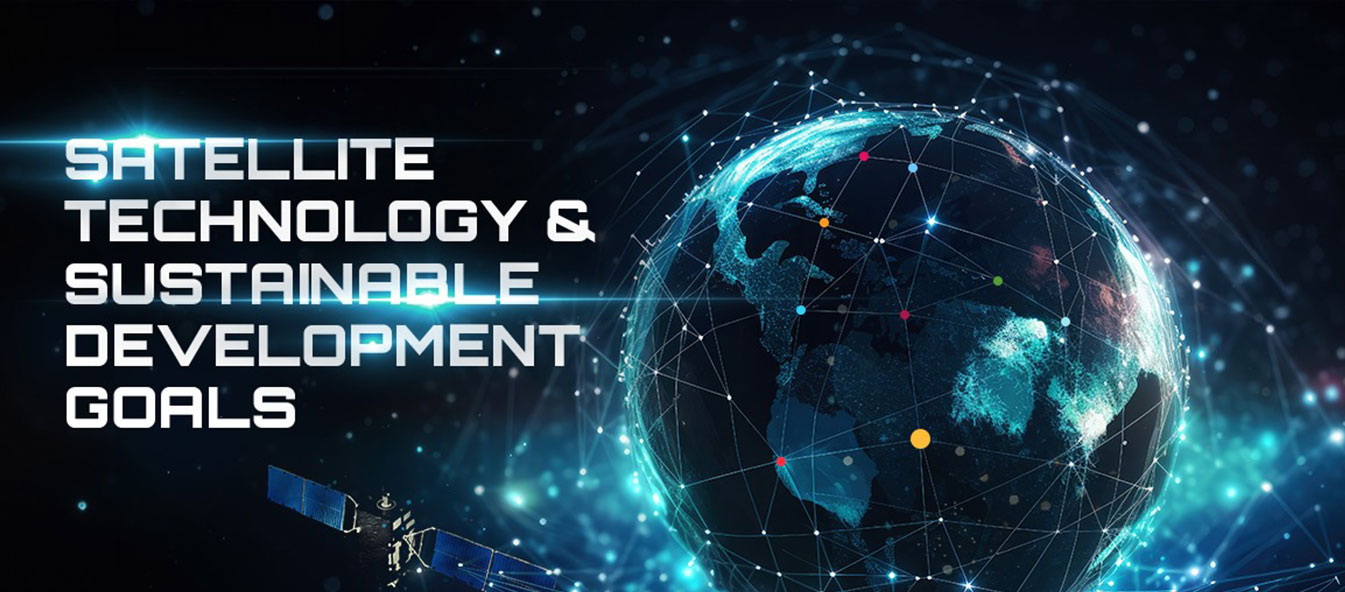Satellite Technology and Sustainable Development Goals


Hakan Savaşan
Chief Technology Officer
Satellite technology plays a pivotal role in sustainable development, aligning closely with Environmental, Social, and Governance (ESG) concerns. The unique vantage point of satellites offers unparalleled opportunities for monitoring and managing Earth’s resources and environments, crucial for achieving the Sustainable Development Goals (SDGs) set by the United Nations. For instance, Earth observation satellites provide critical data for environmental monitoring, such as tracking deforestation, ice melt, and ocean health. This data is vital for understanding and mitigating the impacts of climate change, a key environmental concern. Additionally, satellites aid in disaster management by offering real-time data for monitoring natural disasters, which is essential for effective response and recovery efforts, thereby addressing social aspects of ESG.
Furthermore, satellite technology contributes to the governance aspect of ESG by enhancing transparency and accountability in environmental and social initiatives. For example, satellites monitor compliance with environmental regulations and international agreements on climate change. They also play a crucial role in ensuring connectivity in remote and underserved areas, promoting social inclusion and access to information, which is fundamental for social equity. In the realm of governance, satellite data supports policy-making and international cooperation, providing empirical evidence for informed decisions. Thus, satellite technology is not just a tool for space exploration; it’s a catalyst for sustainable development, addressing ESG concerns by offering solutions that are both innovative and globally impactful.
Satellite Technology’s Contribution to Specific SDGs
Satellite technology significantly contributes to several Sustainable Development Goals (SDGs) due to its unique capabilities in monitoring, data gathering, and global connectivity. Here are some specific SDGs associated with satellite technology and the reasons for their association:
- **SDG 13 (Climate Action)**: Satellites are instrumental in monitoring climate change effects, such as rising sea levels, melting polar ice, and changes in global weather patterns. They provide critical data for understanding and mitigating climate change impacts, making them essential for achieving this goal.
- **SDG 11 (Sustainable Cities and Communities)**: Urban planning and management can be enhanced using satellite imagery and data. This technology aids in monitoring urban expansion, infrastructure development, and environmental impacts on cities, contributing to more sustainable urban living.
- **SDG 15 (Life on Land)**: Satellite technology helps in monitoring deforestation, desertification, and biodiversity loss. It provides valuable data for conservation efforts, helping to protect ecosystems and wildlife, which is crucial for this goal.
- **SDG 14 (Life Below Water)**: Satellites monitor ocean health, including tracking marine pollution, coral bleaching, and overfishing. This data is vital for conserving marine ecosystems and ensuring sustainable use of ocean resources.
- **SDG 2 (Zero Hunger)** and **SDG 12 (Responsible Consumption and Production)**: Satellite data assists in agricultural planning and management, helping to optimize crop yields, monitor soil health, and manage water resources efficiently. This contributes to food security and sustainable agricultural practices.
- **SDG 6 (Clean Water and Sanitation)**: Satellites aid in water resource management by monitoring water bodies, assessing water quality, and identifying changes in water availability, which is essential for managing water resources sustainably.
- **SDG 9 (Industry, Innovation, and Infrastructure)**: The development and deployment of satellite technology itself represent innovation. Additionally, satellites support infrastructure development by providing data for construction planning and monitoring.
- **SDG 16 (Peace, Justice, and Strong Institutions)**: Satellite technology enhances transparency and accountability, especially in monitoring and enforcing environmental regulations and international agreements. It also plays a role in peacekeeping missions by providing critical information in conflict zones.
- **SDG 17 (Partnerships for the Goals)**: Satellites facilitate global communication and data sharing, essential for international collaboration and partnerships in achieving the SDGs.
In summary, satellite technology is a versatile tool that intersects with multiple SDGs, offering solutions from environmental monitoring to enhancing global partnerships, thereby playing a crucial role in the pursuit of sustainable development.
Key Use Cases of Satellite Technology in Sustainable Development
Based on the PwC report “Space: Main Trends and Challenges,” several key use cases of satellite technology that incorporate Environmental, Social, and Governance (ESG) factors are highlighted. These use cases demonstrate the growing importance of satellite technology in addressing global challenges and contributing to sustainable development:
- **Earth Observation for Environmental Monitoring**: Satellites play a crucial role in monitoring environmental changes. This includes tracking deforestation, ice melt in polar regions, ocean health, air quality, and the impact of natural disasters like floods and wildfires. This data is vital for understanding climate change and implementing measures to mitigate its effects.
- **Disaster Management and Response**: Satellite imagery and communication capabilities are crucial in disaster management. They provide real-time data for monitoring and responding to natural disasters such as hurricanes, earthquakes, and tsunamis, aiding in efficient and effective disaster response and recovery efforts.
- **Agricultural Management**: Satellites are used for precision agriculture, providing data on soil health, crop conditions, and water usage. This information helps in optimizing agricultural practices, reducing waste, and enhancing food security while minimizing environmental impacts.
- **Water Resource Management**: Satellite technology aids in monitoring water bodies, assessing water quality, and managing water resources. This is essential for sustainable water management, especially in regions facing water scarcity and pollution issues.
- **Urban Planning and Management**: Satellites support urban planning by providing detailed imagery and data for land use analysis, infrastructure development, and urban sprawl monitoring. This aids in creating sustainable and efficient urban environments.
- **Renewable Energy Siting and Monitoring**: Satellite data assists in identifying optimal locations for renewable energy installations like solar and wind farms. It also helps in monitoring the performance and environmental impact of these renewable energy sources.
- **Climate Change Research and Policy Making**: Satellite data is fundamental in climate change research, providing empirical evidence for policy-making and international climate agreements. It helps in tracking greenhouse gas emissions, understanding climate patterns, and assessing the effectiveness of climate policies.
- **Social Impact and Human Rights Monitoring**: Satellites can monitor areas of conflict, human displacement, and human rights violations. This data is crucial for humanitarian aid, conflict resolution, and ensuring compliance with international human rights standards.
- **Connectivity for Remote and Underserved Areas**: Satellite communication technologies provide internet and telecommunication services to remote and underserved areas, promoting digital inclusion and access to information, education, and healthcare services.
- **Space Debris Monitoring and Management**: As space activities increase, monitoring and managing space debris becomes crucial for the sustainability of space operations. This involves tracking and mitigating the risk of collisions to ensure the safety and longevity of satellite missions.
These use cases underscore the multifaceted role of satellite technology in addressing ESG concerns, highlighting its potential to contribute significantly to sustainable development and global well-being
